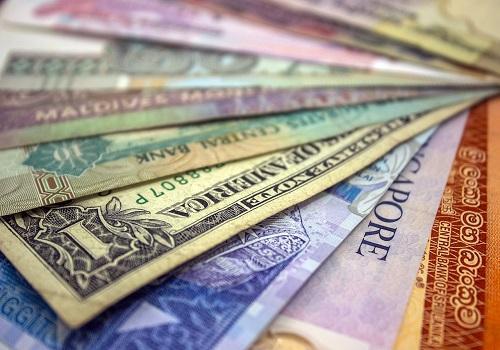
Indian Rupee Strengthens Against US Dollar on Wednesday
The Indian rupee was on a strong footing on Wednesday, gaining against the US dollar as a weaker dollar, falling crude oil prices, and the Reserve Bank of India’s (RBI) defense of the 87.40-87.50 range supported the local currency. The rupee strengthened to 87.12 against the US dollar, a significant improvement from the previous day’s close of 87.35.
The rupee’s strength was largely attributed to a weaker dollar, which was trading lower against several major currencies, including the euro, the Japanese yen, and the British pound. A weaker dollar makes the US currency less attractive to investors, leading to a decrease in demand for it and, subsequently, a strengthening of the rupee.
Additionally, the decline in crude oil prices also contributed to the rupee’s strength. Crude oil is a significant component of India’s import bill, and a decrease in prices reduces the country’s trade deficit. As a result, the rupee benefits from a lower trade deficit, making it stronger against the US dollar.
The RBI also played a crucial role in supporting the rupee by defending the 87.40-87.50 range. The central bank has been actively intervening in the foreign exchange market to prevent excessive volatility and maintain a stable exchange rate. The RBI’s defense of the range has helped to cap the rupee’s losses and prevent it from falling further against the US dollar.
However, despite the rupee’s strength, concerns over a potential trade war due to US tariffs on China, Canada, and Mexico limited gains. The US has imposed tariffs on steel and aluminum imports from these countries, and the situation is expected to escalate further. A trade war could lead to a decrease in global trade, which would negatively impact the Indian economy and the rupee.
FIIs Offload Equities Worth Rs 3,405.82 Crore
In a related development, foreign institutional investors (FIIs) offloaded equities worth Rs 3,405.82 crore on Tuesday. The sale was largely driven by concerns over the trade war and the impact it could have on the Indian economy. FIIs have been net sellers of Indian equities in recent weeks, and the latest sale is a reflection of their reduced appetite for risk.
The rupee’s strength was also evident in the currency futures market, where the one-month contract was trading at 87.10, a significant improvement from the previous day’s close of 87.25.
Outlook
The rupee’s strength is likely to continue in the short term, supported by a weaker dollar, falling crude oil prices, and the RBI’s defense of the 87.40-87.50 range. However, concerns over a potential trade war due to US tariffs on China, Canada, and Mexico could limit gains.
In the medium term, the rupee’s movement will be determined by the direction of the US dollar, crude oil prices, and the RBI’s monetary policy. The central bank is expected to keep interest rates unchanged in its next policy review, which could lead to a decrease in the rupee’s value against the US dollar.
Investors could consider taking a long-term view of the rupee, as its strength is likely to be driven by a weaker dollar and a stable economy. However, the potential for a trade war and the impact it could have on the Indian economy should not be overlooked.






